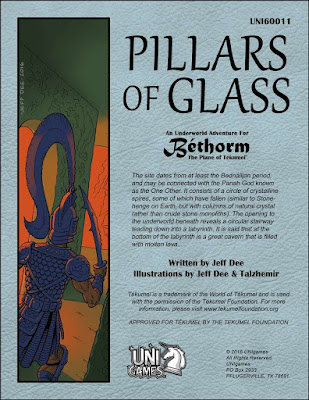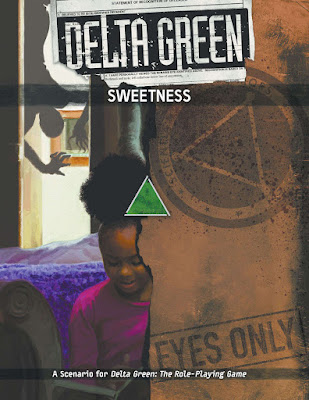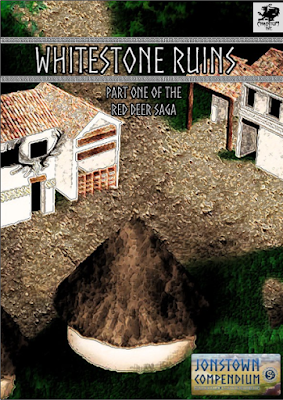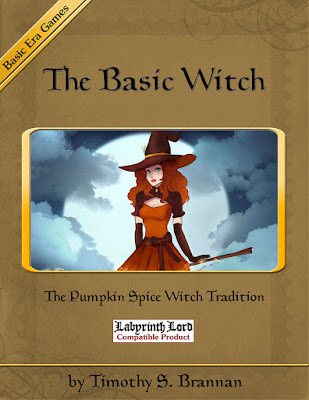
When
Trinity was originally published in 1997, it was a Science Fiction roleplaying game of Psion surviving in the twenty-first century following world war. Published by White Wolf Publishing, it would go on to spawn two prequels—
Aberrant, a superhero game set in the early twenty-first century, and
Adventure!, a Pulp action game set during the Jazz Age of the nineteen twenties. Together they formed the ‘Trinity Continuum’ and together they are being redesigned and republished in second editions by
Onyx Path Publishing. However, the redesign is not as a series of standalone books. Instead, the
Trinity Continuum Core Rulebook—funded following a successful
Kickstarter campaign—would provide the core mechanics, with
Trinity Continuum: Aeon, T
rinity Continuum: Aberrant, and
Trinity Continuum: Adventure! providing specific setting and expanded background content for each of the three eras.
Now the
Trinity Continuum Core Rulebook is not just the core rulebook for the
Trinity Continuum, but it is a standalone set of roleplaying rules designed to emulate a particular range of genres. These encompass high-action, cinematic thrillers, Spy-Fi and heist movies, high tech techno-thrillers right up to near future Science Fiction and low-powered supers stories. So,
Ocean’s Eleven,
The Bourne Identity,
Agents of Shield,
Black Mirror,
Eureka,
Cryptonomicon,
Leverage, and then
Star Trek,
The X-Files,
The Martian,
Stargate, and more. The more fantastic elements these settings have though, the more a Storyguide would need to create them for her campaign as they are obviously not covered in the book. At its core though, the
Trinity Continuum Core Rulebook is a contemporary—or near contemporary—roleplaying game of cinematic action in which the Player Characters are competent and capable, are working for the better good, and in doing so are bringing a sense of hope to the world. What this means is that despite there not being a great deal of specific background in the
Trinity Continuum Core Rulebook, a gaming group can still use it to play Hollywood- or television-style action adventure, intrigue, and investigative procedurals.
A Player Character in the
Trinity Continuum Core Rulebook is defined by his Concept and Aspirations, Paths, Skills and Skill Tricks and Specialities, Attributes, and a Template. The Concept is what the character—Best Wheelman in any Business, Reformed High Society Jewel Thief, Grandmother Hacker, and so on—whilst Aspirations, both two Short Term and one Long Term, are a character’s goals. A Short-Term Aspiration can be completed in a session, a Long-Term Aspiration takes multiple sessions. The Paths represent a character’s past and the decisions he has made and come in three forms—Origin, Role, and Society. The Origin Path is the character’s background and beginning; the Role Path is his occupation or expertise; and Society Path represents his link, positive or negative, to a particular Society. Several sample Societies are detailed in the
Trinity Continuum Core Rulebook and together they form the primary background in the book. An Origin Path might be Military Brat or Suburbia; a Role Path might be Charismatic Leader or Medical Practitioner; and a Society Path might be to 9, the almost United Nations-sanctioned intelligence gathering and law enforcement private agency, or The Global Cartography Initiative.
Mechanically, each Path provides several building blocks towards creating a character. These are access to four skills and points to distribute between them; community, contact, and access connections to the Path; and Edges, which represent areas of specialised training. In the long term, a Path also provides route along which a player can develop his character, and will be rewarded in doing so with slightly reduced Experience Point costs. There are sixteen skills, with most of a character’s skills coming from his Paths. Any skill with a rating of three or more gains a Speciality, such as Pistols for the Aim skill, and then can have a Trick for each point of Skill of three or more, so ‘Mighty Lifter’ or ‘It’s All in the Reflexes’ for Athletics, ‘Connecting the Dots’ or ‘Elite Hacker’ for Enigmas, and ‘Backseat Driver’ or ‘I Can Figure It Out’ for Pilot. Most of a character’s Skills come from his Paths, though he does get extras. Lastly, a character has nine Attributes, divided between Physical, Mental, and Social arenas as well as three Approaches of Force, Finesse, and Resilience. Most actions require a combination of an Attribute and a Skill, but this can be any combination, so there is a lot of flexibility here. Attributes are rated between one and six, Paths and Skills are rated between one and five. It should be noted that the Storyguide and her players are encouraged to create their own Paths, Stunts, Societies, and more.
Lastly, each character has a Template. This marks the Player Character as being more than just a mere human, having been exposed to ‘Aeon Fluxx’, the energy which seems to occur when universes are too close. Each of
Trinity Continuum: Aeon, T
rinity Continuum: Aberrant, and
Trinity Continuum: Adventure! will provide various super-powered Templates, but in the
Trinity Continuum Core Rulebook, the Player Characters are generally Gifted, each Gift either being based on Luck or Aptitude, the latter tied to a skill.
To create a Player Character, a player defines his character’s Concept and Aspirations, then selects—or creates the three Paths and assigns the various points into each Path and its associated Skills and Edges, assigns more Skill points and picks Skill Tricks, assigns Attributes, and apply a Template. The process is by no means difficult, but does involve making a fair number of choices and it is not straightforward in that Attributes are selected last and in that a player will need to flip back and forth through the book to put a character together. This takes a bit of time as a player works through the process.
Our sample character is a reformed jewel thief who stole to support her father, an impoverished minor member of the Russian nobility. She was caught in the act of a theft on the French Riviera by Pharaoh’s Lightkeepers who were after the same artefact. Unlike the other occasion where she managed to escape her thefts, the Pharaoh’s Lightkeepers gave chase and managed to capture her. Instead of handing her into the authorities, they offered her missions and a better purpose.
Name: Claudia Romanov
Concept: High Society Former Jewel ThiefOrigin Path: Life of PrivilegeRole Path: The Sneak
Society Path: Pharaoh’s Lightkeepers
Moment of Inspiration: Exposure to Flux
ASPIRATIONSShort-Term Aspiration: To find out more about SteveShort-Term Aspiration: To learn what Hans Krueger knows
Long-Term Aspiration: To atone for her former life of crime
SKILLSAthletics 1, Close Combat 1, Culture 2, Enigmas 3, Integrity 2, Larceny 3, Persuasion 2, Pilot 1
ATTRIBUTES
Intellect 2 Might 1 Presence 3
Cunning 3 Dexterity 6 Manipulation 4
Resolve 2 Stamina 2 Composure 3
FACETS
Destructive: 0Intuitive: 2
Reflective: 1
Inspiration 3
EdgesArtefact 1, Big Hearted 1, Danger Sense 1, Direction Sense 1, Free Running 1, Photographic Memory 3, Skilled Liar 2
Specialities/Skill TricksGems & Jewellery (Larceny Speciality)Intricate Locks (Enigmas Speciality)That Was Already Mine (Larceny Trick)Instant Solution (Enigmas Trick)
Gifts
Contortionist, Nimble-Fingered, I’m on the List, X Marks the Spot
Path ContactsBoarding School Alumni –Naomi Rothschild 1Fence – Hector Mueller 1Police – Inspector James O’Keefe, Scotland Yard 1
Where Player Characters in
Trinity Continuum: Aeon, T
rinity Continuum: Aberrant, and
Trinity Continuum: Adventure! will have psionics, superpowers, and so on, the
Trinity Continuum Core Rulebook focuses on skilled characters, often exceptionally skilled characters known as ‘Talents’. Each has a selection of Gifts, typically tied to a particular skill such as ‘Cold Read’ of a person using Culture or Empathy or ‘Daredevil’ for Pilot. Other Gifts are simply luck-based, such as ‘A Friend in Every Port’ or ‘Knee Deep in Brass’. Such Gifts are fuelled by Inspiration, which can also be used to create Enhancements to an action or skill attempt based on one a character’s Facets—Destructive, Intuitive, or Reflective, each representing differing ways of approaching a situation or problem, to undertake Dramatic Editing of a scene, or to improve a character’s current defence. Although a character only has a few points of Inspiration, it is easy to get back and so enable a character to shine again in a later scene.
Where the Trinity family originally used the Storyteller mechanics, the
Trinity Continuum Core Rulebook is written for use with the Storypath system. The Storypath system can be best described as a distillation of the Storyteller system—the mechanics of which date all of the way back to Vampire: The Masquerade—and certainly anyone familiar with the Storyteller system will find that it has a lot in common with the Storypath system, except that the Storypath system is simpler and streamlined, designed for slightly cinematic, effect driven play. The core mechanic uses dice pools of ten-sided dice, typically formed from the combination of a skill and an attribute, for example Pilot and Dexterity to fly a helicopter, Survival and Stamina to cross a wilderness, and Persuasion and Manipulation to unobtrusively get someone to do what a character wants. These skill and attribute combinations are designed to be flexible, the aim being any situation is to score one or more Successes, a Success being a result of eight or more. Rolls of ten—or ‘10-again’—allow dice to be rolled again to gain further success.
To succeed, a player needs to roll at least one Success, and may need to roll more depending upon the Difficulty of the task. Should a character succeed, he can increase the number of Successes with an Enhancement, such as having a fast car in a race or the right outfit for the occasion. Any Successes generated beyond the Difficulty become Threshold Successes and represent how well the character has succeeded. These can be spent by the player to buy off Complications, for example, not attracting the attention of the Police in a car chase, or to purchase Stunts. These can cost nothing, for example, the Inflict Damage Stunt, whereas the Disarm Stunt costs two and the Critical Hit Stunt costs four. Stunts can be used to inflict a Complication upon an opponent, to create an Enhancement for the current or another Player Character, or create a means to Defend the Player Character, which then has to be overcome by the opposition. Stunts in the
Trinity Continuum Core Rulebook will also come from a Player Character’s Edges and Gifts.
Under the Storypath system, and thus in the
Trinity Continuum Core Rulebook, failure is never abject. Rather, if a player does not roll any Successes, then he receives a Consolation. This can be a ‘Twist of Fate’, which reveals an alternative approach or new information; a ‘Chance Meeting’ introduces a new helpful NPC; or an ‘’Unlooked-for Advantage’, an Enhancement which can be used in a future challenge. However, a character will typically gain Momentum, a single point for a simple failure, and two points for a Botch, the latter a failed roll in which a one is also rolled. Momentum is a resource shared by all of the players and they begin each game with a pool of points equal to their number. It is spent to activate Skill Tricks, to add extra dice to a roll, and to attempt rerolls for complex tasks.
The cinematic nature of combat in the
Trinity Continuum Core Rulebook is how reloading a gun is handled. If it is part of an action, such as shooting, then it becomes a Complication which a Player Character will need to spend a Success to buy off. A Reload action will typically be required when a player botches an attack with a gun or the character has performed the ‘Emptying the Magazine’ stunt for an automatic weapon. Rather than making the Reload action part of the mechanics, the rules make it part of the action.
One aspect of the action and the combat in the
Trinity Continuum Core Rulebook is that it not designed to be simple. Instead, it is designed to be complex, not mechanically, but narratively. The rules can handle the simple exchange of blows, feints, blocks, and deflections and does so with alacrity, but the
Trinity Continuum Core Rulebook is inspired by the type of action and fights we see onscreen. What this means is that it allows for fights or pieces of action in difficult situations—fights or situations that the Storyguide is encouraged to create. For example, instead of a chase through city streets, the chase is through the streets of a city amidst a civil protest; instead of a fight to gain control of a vehicle, the fight is to gain control of a vehicle whilst it hurtles down the side of a mountain with faulty brakes. There is some complexity here in that a player has to calculate multiple actions, so in the case of driving down the mountain whilst fighting off the mook, his player will work out what he would roll for the driving attempt (Pilot plus Might) to keep the vehicle under control and what he would roll to fend off the attacks of the mook (Close Combat plus Dexterity). However, instead of making multiple rolls, the player will only make one roll, the one with the lowest number of dice. For example, Claudia Romanov has broken into the mansion of Hans Kreuger to steal the Gambaccini Quartet, a set of jewellery which she thinks has clues to the location of an ancient temple that she knows Kreuger has been searching for some nefarious purposes of his own. Unfortunately, an alarm has been triggered and as she attempts to work out the intricacies of a complex lock system, a couple of guards are looking for whatever triggered the alarm. They have their torches out and are searching nearby. So Claudia wants to work out how to open the lock whilst avoiding the torch beams. Picking the lock would normally be a Larceny and Dexterity check, as would the stealth check to avoid the torch beams. The Storyguide though, states that the lock on Hans Kreuger’s vault is not straightforward and is more puzzle like, so suggests using Enigmas. This will be an Enigmas and Intellect roll. For Claudia, the Enigmas and Intellect will be with five dice, compared to the nine dice of the Larceny and Dexterity check, so her player will roll the former. The Storyguide sets the Difficulty at three. Claudia’s player rolls 3, 7, 9, 9, and 10. The target number for the dice is eight, which means that Claudia has succeeded. The roll of 10—or ‘10-again’—means that this die can be rolled again. A roll of a 9 adds another success for a total of four. Another two are added as an Enhancement for Claudia already have seen the plans for the locking mechanisms earlier in the adventure for a grand total of six. Three successes are used to overcome the difficulty. Claudia’s player decides that two of these extra successes will be spent to add a Complication, in this case leaving little or no trace for the security guards to follow as she makes her way out. The leftover success is used to make Claudia undertake the task quickly. Beyond the action mechanics, the
Trinity Continuum Core Rulebook gives rules for handling Procedurals—or investigative play, Intrigue for interacting with people, and making friends and bonds, handling super-science, and vehicles right up to multi-crew starships. Each of these sections is not necessarily innovative, but straightforward and easy to use. So the Procedural rules focus not on the Player Characters getting the core clues—that is automatic, but on their interpretation and on obtaining clues extra or alternative to any core clue. The Intrigue tracks an NPC’s attitude towards a Player Character, with the actions of the Player Character determining how this will change and whether the NPC will help him. The Super-Science rules neatly cover repairing, reverse engineering, and reforging of items and artefacts, complete with a list of flaws and stunts. Again, simple should cover most situations.
For the Storyguide there is solid advice on her responsibilities—including sharing some of them with her players, creating a campaign, how to run and improvise a game, and more. There is also a lengthy discussion of the genres that the
Trinity Continuum Core Rulebook covers along with examples of each. In terms of background, there is not really very much to be found in the
Trinity Continuum Core Rulebook. Primarily, this because the default setting for the
Trinity Continuum Core Rulebook is the here and now, or the near here and now, with stories ripped from the headlines. To support the fantastical or ‘Talented’ elements of the
Trinity Continuum Core Rulebook’s here and now, it details five allegiances, such as the Aeon Society and The Neptune Society, as well as lesser allegiances, which the Player Characters belong to and each of which provides a Path during character generation, as well as frameworks upon which to hang a campaign.
Physically, the
Trinity Continuum Core Rulebook is neat, larger than digest-sized hardback. It is well-written, the full colour artwork throughout is excellent, and the whole affair is attractive. Perhaps in places it feels a little too concise, for example, the sample combat feels as if it could have been better explained mechanically. It could also have been slightly better organised such as not having the Society Paths and the Gifts right at the back of the book, which makes the character creation process a bit of a chore. Neither of these issues are insurmountable, the Storyguide simply needing to work through the book to rough out potential niggles in the rules or book before bringing a game to the table, pretty much the same as she would for any other roleplaying game.
What the
Trinity Continuum Core Rulebook presents is not so much a roleplaying game with a setting, but a roleplaying game with a genre—the setting will be provided by the Storyguide and enhanced by the players. As a set of rules, the
Trinity Continuum Core Rulebook is the firm foundation upon which the three settings will rest, as a roleplaying game in its own right, the
Trinity Continuum Core Rulebook provides everything a gaming group will need for high-action roleplaying. It does both in a concise, easy-to-read fashion, leaving plenty of room for the Storyguide and her players to bring their ideas and their action to the table.
 Grýlka, ePic CharacterIt's Troll Week here at the Other Side!
Grýlka, ePic CharacterIt's Troll Week here at the Other Side!

 Grýlka, HeroForgeTrollaHumanoid (Faerie)Frequency: Very RareNumber Appearing: 1 (1-4)Alignment: Neutral/Chaotic (Chaotic Neutral, Chaotic Evil)Movement: 120' (40') [12"]Armor Class: 7 [12]Hit Dice: 1d8+2** (6 hp) to 13d8+26** (85)Attacks: 1 weapon or spellDamage: 1d8 (or by weapon type) or by spellSpecial: Regeneration (1hp per hour), witch spells, vulnerable to silverSize: Medium/LargeSave: Fighter 1 or Witch 1 to 13Morale: 10Treasure Hoard Class: VariesXP: Varies
Grýlka, HeroForgeTrollaHumanoid (Faerie)Frequency: Very RareNumber Appearing: 1 (1-4)Alignment: Neutral/Chaotic (Chaotic Neutral, Chaotic Evil)Movement: 120' (40') [12"]Armor Class: 7 [12]Hit Dice: 1d8+2** (6 hp) to 13d8+26** (85)Attacks: 1 weapon or spellDamage: 1d8 (or by weapon type) or by spellSpecial: Regeneration (1hp per hour), witch spells, vulnerable to silverSize: Medium/LargeSave: Fighter 1 or Witch 1 to 13Morale: 10Treasure Hoard Class: VariesXP: Varies 1st level Witch, Green Witch TraditionChaotic Neutral
1st level Witch, Green Witch TraditionChaotic Neutral




























